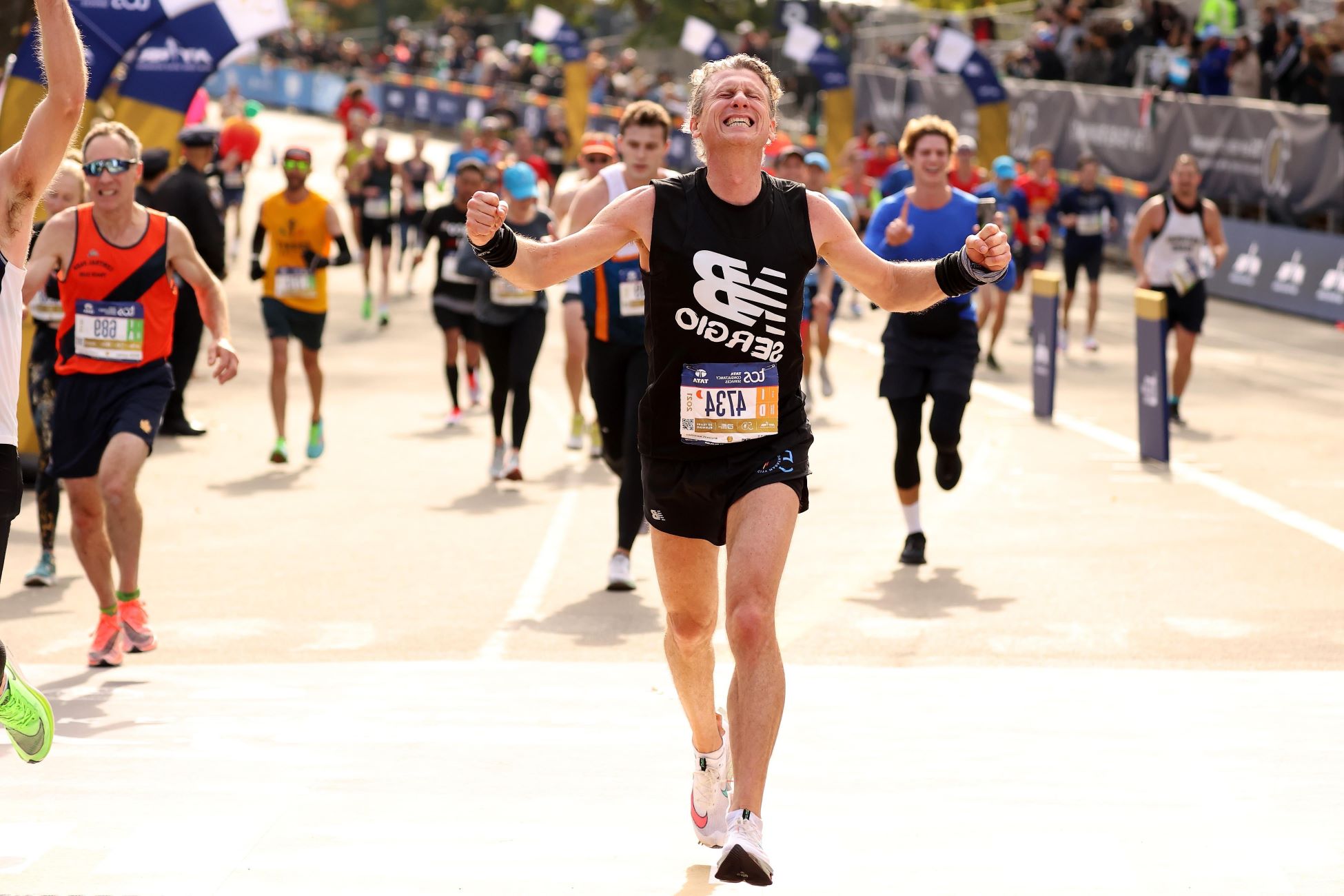Home>Health & Nutrition>The Impact Of High Temperatures On Running And Strategies For Coping


Health & Nutrition
The Impact Of High Temperatures On Running And Strategies For Coping
Published: February 21, 2024
Discover how high temperatures affect running and learn effective strategies for coping. Explore the impact on health and nutrition.
(Many of the links in this article redirect to a specific reviewed product. Your purchase of these products through affiliate links helps to generate commission for Therunningadvisor.com, at no extra cost. Learn more)
Table of Contents
- Understanding the Effects of High Temperatures on Running Performance
- Hydration and Electrolyte Balance: Key Factors in Coping with High Temperatures
- Adjusting Your Training and Racing Strategies for Hot Weather
- Gear and Clothing Considerations for Running in High Temperatures
- Mental Preparation and Coping Strategies for Running in Hot Weather
Understanding the Effects of High Temperatures on Running Performance
Running in high temperatures can significantly impact your performance and overall well-being. When the mercury rises, your body has to work harder to regulate its temperature, leading to increased stress on the cardiovascular system and reduced exercise capacity. Understanding the physiological effects of high temperatures on the body is crucial for adapting your training and racing strategies to cope with these challenges.
-
Increased Heart Rate: High temperatures cause the body to divert more blood to the skin to dissipate heat, leading to an increased heart rate to maintain the same exercise intensity. This elevated heart rate can lead to premature fatigue and reduced endurance capacity.
-
Dehydration: Sweating is the body's primary mechanism for cooling down during exercise in the heat. However, excessive sweating can lead to dehydration, which impairs thermoregulation and cardiovascular function. Dehydration can also result in decreased blood volume, leading to reduced oxygen delivery to working muscles.
-
Electrolyte Imbalance: Sweating not only leads to fluid loss but also results in the depletion of essential electrolytes such as sodium, potassium, and magnesium. Electrolyte imbalance can impair muscle function, leading to cramping and decreased exercise performance.
-
Heat Stress: High temperatures can cause heat stress, leading to a cascade of physiological responses such as increased core body temperature, decreased blood flow to muscles, and impaired cognitive function. These factors can significantly impact running performance and increase the risk of heat-related illnesses.
By understanding these effects, runners can make informed decisions to mitigate the impact of high temperatures on their performance. Implementing strategies such as proper hydration, adjusting training intensity, and optimizing gear and clothing choices can help minimize the negative effects of running in hot weather.
Hydration and Electrolyte Balance: Key Factors in Coping with High Temperatures
Maintaining optimal hydration and electrolyte balance is paramount for runners facing the challenges of high temperatures. In hot weather, the body's cooling mechanism primarily relies on sweating, leading to significant fluid and electrolyte loss during prolonged exercise. Failing to address these losses can result in decreased performance, increased risk of heat-related illnesses, and compromised overall well-being.
Importance of Hydration
Proper hydration is fundamental for supporting cardiovascular function, thermoregulation, and overall exercise performance. When running in high temperatures, the body's fluid requirements increase to compensate for the elevated sweat rate and fluid loss. Dehydration can lead to a decrease in blood volume, impairing the body's ability to dissipate heat and deliver oxygen to working muscles. As a result, maintaining adequate hydration levels is crucial for sustaining endurance and minimizing the negative impact of heat stress on running performance.
Electrolyte Balance
Electrolytes, such as sodium, potassium, and magnesium, play a vital role in muscle function, nerve transmission, and fluid balance within the body. During prolonged exercise in the heat, significant electrolyte losses occur through sweat, potentially leading to imbalances that can impair muscle contraction and increase the risk of cramping. Replenishing these essential electrolytes is essential for sustaining optimal performance and preventing the detrimental effects of electrolyte depletion.
Strategies for Coping with High Temperatures
To effectively cope with high temperatures, runners must prioritize hydration and electrolyte balance through the following strategies:
- Pre-hydration: Begin exercise in a well-hydrated state by consuming fluids in the hours leading up to a run. This can help offset the fluid losses experienced during exercise in the heat.
- Fluid Replacement: During prolonged runs in high temperatures, aim to consume fluids at regular intervals to replace sweat losses and maintain hydration levels. Water and sports drinks containing electrolytes can be effective choices for fluid replacement.
- Electrolyte Supplementation: Incorporate electrolyte-rich foods and beverages into your pre- and post-run nutrition to replenish the electrolytes lost through sweat. Additionally, consider using electrolyte supplements during extended runs to support optimal electrolyte balance.
- Post-Run Rehydration: Following a run in high temperatures, prioritize rehydration by consuming fluids and electrolyte-rich foods to restore hydration levels and aid in recovery.
By prioritizing hydration and electrolyte balance, runners can effectively cope with the challenges posed by high temperatures, optimize their running performance, and reduce the risk of heat-related complications. These strategies are essential components of a comprehensive approach to managing the impact of high temperatures on running, ensuring that runners can continue to pursue their passion for running while safeguarding their well-being in challenging environmental conditions.
Adjusting Your Training and Racing Strategies for Hot Weather
Training and racing in hot weather present unique challenges that require strategic adjustments to optimize performance and mitigate the potential negative effects of high temperatures. By implementing tailored training and racing strategies, runners can adapt to the demands of hot weather conditions and enhance their overall running experience.
Training Modifications
When preparing for races or regular training runs in hot weather, it is essential to make deliberate modifications to training routines to accommodate the environmental conditions. Here are key considerations for adjusting training strategies:
-
Timing: Schedule training sessions during the cooler parts of the day, such as early morning or late evening, to minimize exposure to peak temperatures and reduce the risk of heat-related stress.
-
Intensity: Adjust workout intensity to account for the additional strain imposed by high temperatures. This may involve reducing pace expectations or incorporating more frequent rest intervals to prevent overheating and excessive fatigue.
-
Acclimatization: Gradually expose the body to the heat through acclimatization training. This process allows the body to adapt to the environmental stressors, improving heat tolerance and enhancing performance in hot conditions.
-
Hydration Focus: Place a heightened emphasis on hydration during training sessions in hot weather. Incorporate regular fluid intake and consider carrying water or utilizing hydration belts to ensure adequate hydration throughout the run.
Racing Strategies
In competitive events held in hot weather, runners must adjust their racing strategies to optimize performance and minimize the impact of environmental stressors. Here are key considerations for adapting racing strategies:
-
Pacing Adjustments: Modify race pacing to accommodate the increased physiological strain imposed by high temperatures. Starting at a slightly slower pace and gradually increasing speed can help prevent early fatigue and improve overall race performance.
-
Hydration Planning: Develop a comprehensive hydration plan for race day, considering factors such as fluid intake timing, electrolyte supplementation, and access to aid stations. Adequate hydration is critical for sustaining performance and minimizing the risk of dehydration-related complications.
-
Cooling Strategies: Incorporate cooling strategies, such as pouring water over the body or utilizing cooling aids, to mitigate the impact of high temperatures during the race. These tactics can help regulate body temperature and enhance comfort in hot conditions.
-
Adaptation to Conditions: Mentally prepare to adapt to the environmental conditions and embrace the challenges posed by hot weather. Developing a resilient mindset and acknowledging the influence of external factors can empower runners to navigate race day with confidence and determination.
By adjusting training and racing strategies to align with the demands of hot weather, runners can optimize their performance, reduce the risk of heat-related issues, and cultivate a proactive approach to running in challenging environmental conditions. These strategic adaptations empower runners to embrace the unique challenges of hot weather and continue pursuing their running goals with confidence and resilience.
Gear and Clothing Considerations for Running in High Temperatures
Selecting the appropriate gear and clothing is pivotal for runners navigating high temperatures, as it directly influences comfort, performance, and overall well-being during hot weather runs. By prioritizing breathable fabrics, sun protection, and strategic accessories, runners can effectively manage the challenges posed by elevated temperatures and optimize their running experience.
Read more: The Impact Of Running On Meniscal Cysts
Breathable Fabrics
Choosing moisture-wicking and breathable fabrics is essential for running in high temperatures. Lightweight materials that facilitate sweat evaporation and airflow help to regulate body temperature and minimize discomfort during intense workouts in the heat. Fabrics such as polyester blends and technical performance materials are popular choices for their ability to wick moisture away from the skin, keeping runners dry and cool throughout their runs.
Sun Protection
Incorporating sun-protective elements into running attire is crucial for safeguarding the skin from harmful UV rays. Opt for clothing with UPF (Ultraviolet Protection Factor) features to shield against sun exposure, especially during long runs in sunny conditions. Additionally, wearing a cap or visor with a brim and utilizing UV-protective sunglasses can provide added protection for the face and eyes, reducing the risk of sunburn and sun-related discomfort.
Lightweight and Ventilated Design
Prioritize lightweight and ventilated clothing designs to enhance breathability and airflow during hot weather runs. Garments with strategic ventilation panels, mesh inserts, and perforated details promote air circulation, aiding in heat dissipation and moisture management. This design approach helps prevent overheating and allows runners to maintain a comfortable body temperature, even in challenging environmental conditions.
Moisture-Wicking Headwear
Incorporating moisture-wicking headwear, such as performance hats or headbands, can effectively manage sweat and enhance comfort during runs in high temperatures. These accessories help absorb perspiration and prevent it from dripping into the eyes, allowing runners to maintain clear vision and focus throughout their workouts. Additionally, moisture-wicking headwear aids in temperature regulation and minimizes the risk of overheating during prolonged runs in the heat.
Read more: The Impact Of Covid On Running
Hydration Accessories
Integrating hydration accessories, such as handheld water bottles, hydration belts, or hydration vests, is essential for maintaining adequate fluid intake during hot weather runs. These accessories enable runners to carry water or sports drinks conveniently, ensuring consistent hydration throughout their workouts. Staying properly hydrated is critical for sustaining performance and minimizing the risk of dehydration-related complications in high temperatures.
By carefully considering gear and clothing options tailored to hot weather running, runners can effectively manage the impact of elevated temperatures, enhance their comfort, and optimize their performance. These considerations empower runners to approach hot weather runs with confidence, knowing that their attire is designed to support their well-being and running goals in challenging environmental conditions.
Mental Preparation and Coping Strategies for Running in Hot Weather
Running in hot weather not only presents physical challenges but also demands mental resilience and effective coping strategies to navigate the environmental stressors. Mental preparation plays a pivotal role in enabling runners to confront the discomfort and exertion associated with high temperatures, ultimately influencing their ability to sustain performance and well-being during hot weather runs.
Mindset and Attitude
Maintaining a positive and adaptive mindset is fundamental for coping with the demands of hot weather running. Embracing a proactive attitude and acknowledging the influence of external factors empower runners to approach the challenges of high temperatures with determination and resilience. Cultivating a mindset focused on embracing discomfort as part of the running experience can shift the perception of hot weather conditions from a hindrance to an opportunity for personal growth and mental fortitude.
Visualization and Mental Rehearsal
Engaging in visualization and mental rehearsal techniques can help runners prepare for running in hot weather. By visualizing successful runs in challenging conditions and mentally rehearsing coping strategies, runners can enhance their confidence and mental preparedness. Visualizing a positive outcome and envisioning effective heat management techniques can instill a sense of control and readiness, reducing anxiety and enhancing mental resilience when facing the rigors of hot weather running.
Focus and Distraction Management
Maintaining focus and effectively managing distractions are essential components of mental preparation for running in hot weather. Concentrating on present-moment awareness and adopting mindfulness practices can help runners stay attuned to their body's signals and manage discomfort more effectively. Additionally, implementing distraction management techniques, such as focusing on rhythmic breathing or positive affirmations, can redirect attention away from the challenges of the environment, promoting mental clarity and endurance during hot weather runs.
Adaptive Goal Setting
Adapting performance goals and expectations to align with the realities of hot weather conditions is crucial for mental preparation. Setting realistic and adaptive goals that account for the impact of high temperatures can prevent frustration and disappointment, fostering a sense of accomplishment and progress regardless of the environmental challenges. By embracing flexibility in goal setting and performance evaluation, runners can maintain motivation and confidence in their ability to thrive in hot weather conditions.
Resilience and Self-Encouragement
Building mental resilience and practicing self-encouragement are integral coping strategies for running in hot weather. Embracing the discomfort of high temperatures as an opportunity for mental toughness development can empower runners to persevere through challenging conditions. Engaging in positive self-talk, affirming personal capabilities, and acknowledging resilience in the face of adversity can bolster mental strength and fortitude, enabling runners to confront the rigors of hot weather running with confidence and determination.
By integrating these mental preparation and coping strategies into their approach to running in hot weather, runners can cultivate a resilient mindset, enhance their ability to manage environmental stressors, and optimize their performance. These strategies empower runners to embrace the challenges of hot weather running with mental fortitude, ensuring that they can continue pursuing their passion for running while safeguarding their well-being in demanding environmental conditions.












